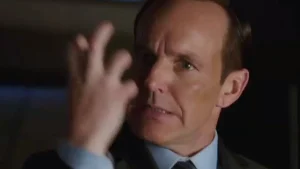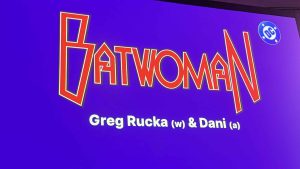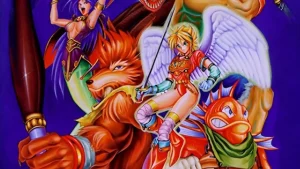While a horror film has about two hours to build suspense and deliver its scares, a series has the luxury of time. It can let dread accumulate over weeks, methodically turning the screws on its audience and allowing characters to breathe in a world saturated with fear. This extended format allows creators to move beyond the jump scare and into the realm of psychological horror, exploring the long-term consequences of trauma and the slow unraveling of the human mind when confronted with the unthinkable. The structure also fosters a deeper connection between the viewer and the characters, making their plight all the more terrifying when the inevitable horror arrives. This advantage becomes even more apparent when television creators take on established film properties.
A classic horror movie often presents a brilliant premise but has little time to explore its full implications or the rich mythology bubbling just beneath the surface. A series can take that core idea and expand it in every direction, transforming a contained story into a sprawling universe. It can flesh out iconic villains, giving them complex backstories that make them even more menacing, or follow the survivors as they grapple with the aftermath. The best of these adaptations uses the breathing room of television to create something that is not only faithful to the spirit of the original but sometimes even surpasses it in depth and impact.
The Wolf Creek television series brilliantly subverts the film’s formula by shifting its focus from the killer to the survivor. While the original movie was a brutally effective thriller that centered on the terrifying ordeal of Mick Taylor’s (John Jarratt) victims, the first season of the show transforms the narrative into a gripping revenge saga. The story follows Eve Thorogood (Lucy Fry), the sole survivor of a massacre, as she hunts the man who destroyed her family. This change provides a much more satisfying and emotionally resonant character arc than the film’s lean runtime could allow, turning the hunted into the hunter. The show still delivers the visceral horror that made the movie a cult classic, but by grounding the violence in a quest for justice, it adds an emotional layer that makes the story far more compelling.
The central premise of The Purge film franchise, a single night where all crime is legal, is one of modern horror’s great high concepts. The movies use this idea to create intense survival thrillers, but their focus on the night itself means the wider societal implications are often left as background details. The television series of The Purge finally had the breathing room to explore this fascinating dystopian world in detail. The show examines how the annual event shapes society year-round, delving into the lives of characters from different walks of life as they prepare for the violence. The series also introduces concepts like Purge-worshipping cults and the commercialization of murder, building a more nuanced and terrifying world than any of the films were able to construct.
Robert Rodriguez’s From Dusk Till Dawn: The Series accomplishes something the 1996 cult classic never had time for: building a world. The film is famous for its shocking mid-point twist, where a gritty crime thriller suddenly becomes an explosive vampire siege. The television series takes that second-act reveal and uses it as the foundation for a sprawling supernatural saga rooted in Mesoamerican mythology. While the movie’s vampires were a shocking and sudden threat, the show reveals them to be part of an ancient and complex culture. The expanded format gives characters like the Gecko brothers and the Fuller family more room to develop, but its greatest achievement is the dramatic expansion of the vampire queen Santanico Pandemonium (Eiza González), transforming her from a memorable monster into a tragic and compelling character.
While the film Misery presented audiences with a fully-formed monster in Annie Wilkes (Kathy Bates), the second season of the anthology series Castle Rock took on the ambitious task of crafting her origin story. The show offers a heartbreaking look at a younger Annie (Lizzy Caplan), a woman struggling with severe mental illness while on the run with her daughter. This new context completely reframes the iconic villain, presenting her not as a simple psychopath but as a tragic figure whose violent tendencies are born from a desperate and misguided need to protect her child. Caplan’s performance is a tour de force, adding a stunning layer of vulnerability to the character that makes her eventual descent into madness all the more horrifying. As a result, the TV season is a brilliant expansion that adds unexpected depth to one of Stephen King’s greatest creations.
Following up a film as iconic as 1973’s The Exorcist proved impossible for its cinematic sequels, which is what makes the 2016 television series such a remarkable achievement. The show cleverly disguised itself as a simple reboot for its first few episodes, introducing a new case of possession and two compelling priests, Father Tomas Ortega (Alfonso Herrera) and Father Marcus Keane (Ben Daniels). However, a brilliant mid-season twist revealed that the show was actually a direct sequel, with Geena Davis’s character being a traumatized adult version of Regan MacNeil from the original film. This revelation masterfully bridged the gap between the old and new, allowing the series to honor its cinematic roots while building a fresh and genuinely terrifying mythology of its own. Because of that, The Exorcist TV show remains the only follow-up worthy of the original’s name.
Instead of a fourth film, fans of the Evil Dead trilogy received the perfect continuation in the form of Ash vs. Evil Dead, a series that perfectly recaptures the movies’ blend of gore and slapstick. The show brings back Ash Williams (Bruce Campbell) as an aging, washed-up stock boy who must once again pick up his chainsaw and boomstick to fight the forces of evil. The series format proved to be the ideal home for the character, providing endless opportunities for creative Deadite kills while also giving Ash his first real character arc. Flanked by his new sidekicks, Pablo (Ray Santiago) and Kelly (Dana DeLorenzo), Ash is forced to evolve from a selfish loner into a reluctant leader. During this journey, Ash vs. Evil Dead delivered everything fans loved about the films while deepening the lore and giving its hero a surprisingly heartfelt final chapter.
The Child’s Play film franchise is famously inconsistent, but the Chucky television series manages to stitch together decades of lore into the definitive version of the story. For starters, creator Don Mancini uses the long-form format to unite the disparate tones of the movies, balancing genuine slasher horror with the campy humor that has become a series trademark. Furthermore, the show grounds its narrative in a surprisingly sincere coming-of-age story centered on a young gay teen, Jake Wheeler (Zackary Arthur), who becomes the killer doll’s latest owner. Finally, the new story runs parallel to the continuing saga of legacy characters like Tiffany Valentine (Jennifer Tilly), allowing the series to serve both longtime fans and new audiences. The result is the most ambitious and emotionally resonant chapter in the killer doll’s long and bloody history.
Alfred Hitchcock’s Psycho gave us one of cinema’s greatest monsters, but the television series Bates Motel gave him a soul. The show reimagines the story as a modern-day psychological tragedy, exploring the twisted, codependent relationship between a teenage Norman Bates (Freddie Highmore) and his volatile mother, Norma (Vera Farmiga). The series is a shining example of character development in television format, meticulously chronicling Norman’s descent into madness and Norma’s desperate attempts to save him. To make things better, Farmiga’s powerhouse performance gives a voice and a heartbreaking personality to a character who was only a corpse in the original film. This added depth completely recontextualizes the events of Psycho, transforming the story into an unforgettable family tragedy.
It’s a rare feat for a spin-off to outshine its source material, but the television version of What We Do in the Shadows expands on the 2014 film’s perfect premise to create one of the best comedies on television, horror or otherwise. The show moves the mockumentary action to Staten Island and introduces a new coven of vampire roommates, including the hilariously mundane “energy vampire” Colin Robinson (Mark Proksch). While the film was a brilliant slice of life, the series uses its extended format to build an incredibly rich and absurd supernatural world filled with vampire councils, werewolves, and ghosts. Plus, the ongoing narrative, driven by the vampire familiar Guillermo (Harvey Guillén), gives the show a compelling story engine that elevates it beyond the movie’s looser structure, making for a richer and endlessly inventive experience.
Anthony Hopkins’ portrayal of Hannibal Lecter is an iconic piece of cinema history, which makes Mads Mikkelsen’s performance in the television series Hannibal all the more astounding. The show, created by Bryan Fuller, reimagines the early relationship between the cannibalistic psychiatrist and FBI profiler Will Graham (Hugh Dancy), and in doing so, creates the definitive adaptation of Thomas Harris’s novels. Hannibal is a work of breathtaking and grotesque art, prioritizing psychological horror and a suffocating sense of dread over the procedural elements of the films. In addition, Mikkelsen’s Lecter is a seductive and terrifying predator, and his slow corruption of Will Graham is one of the most compelling and disturbing relationships ever put on screen. As a result, the series is a daring and brilliant reimagining that surpasses even The Silence of the Lambs in its artistic ambition and psychological depth.
What other horror TV show do you think was better than the movie it was based on? Leave a comment below and join the conversation now in the ComicBook Forum!
The post 10 Horror TV Shows That Outdid Their Movie Counterparts appeared first on ComicBook.com.




